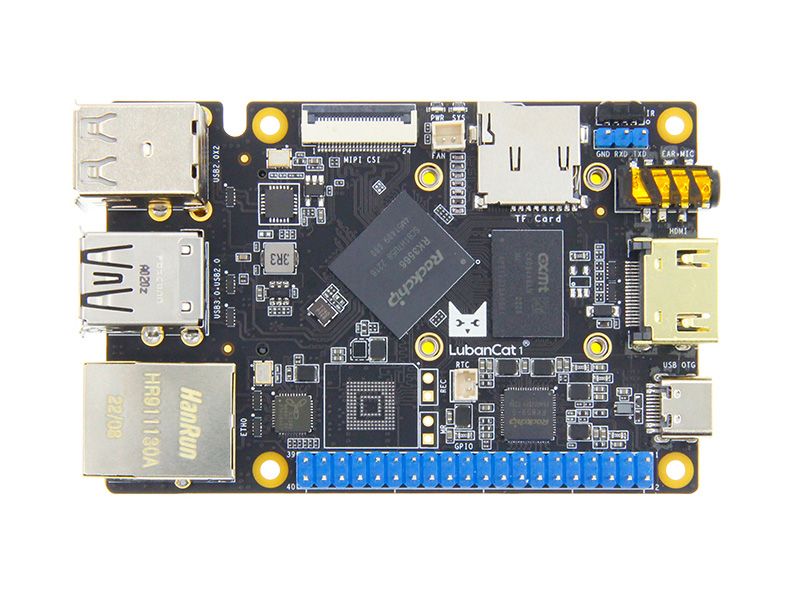
LubanCat1 by EmbedFire
Specifications
- 5V@3A DC input, Type-C interface
- RK3566 (quad-core Cortex-A55, 1.8GHz, Mali-G52)
- 1/2/4/8GB, LPDDR4/4x, 1056MHz
- 8/32/64/128GB eMMC
- 10/100/1000M adaptive Ethernet port*1
- HDMI2.0 display interface
- MIPI screen interface, can be plugged into Wildfire MIPI screen
- Camera interface, can plug wildfire OV5648 camera
- Type-A interface*1 (HOST)
- The SIM card function needs to be used with a 4G module
- Compatible with Raspberry Pi 40Pin interface, supports PWM, GPIO, I²C, SPI, UART functions
- Default parameter 1500000-8-N-1
- Support Micro SD (TF) card boot system, up to 128GB
- Headphone output + microphone input 2 in 1 interface
- MaskRom via; Recovery via;
- Support infrared remote control function
- Support RTC function
- Support fan cooling
- Type-A interface*3 (HOST);
- Type-C interface *1 (OTG), for firmware burning interface, shared with the power interface
- It can be used with full-height or half-height WIFI network card, 4G module or
- Other Mini-PCIe interface modules use
Contribute
Have some info to add for this board? Edit the source for this page here.
Adafruit Blinka Installation
We use a special library called adafruit_blinka (named after Blinka, the CircuitPython mascot) to provide the layer that translates the CircuitPython hardware API to whatever library the Linux board provides.
For example, on Raspberry Pi we use the python RPi.GPIO library. For any I2C interfacing we'll use ioctl messages to the /dev/i2c device. For SPI we'll use the spidev python library, etc. These details don't matter so much because they all happen underneath the adafruit_blinka layer.
